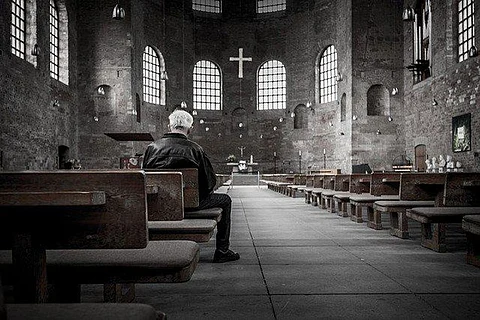
- Home
- न्यूजग्राम
- NewsGram USA
- India
- World
- Politics
- Entertainment
- Culture
- Lifestyle
- Economy
- Sports
- Sp. Coverage
- Misc.
- NewsGram Exclusive
- Jobs / Internships

BY- JAYA CHOUDHARY
Northeast India, which is made up of eight states, covers 7.7% of the country's land area but has less than 4% of the population. It is home to about 200 tribal groupings, as well as a diverse range of languages and dialects. Despite the fact that Christianity first spread to this portion of the nation in the 29th century, it now has a population of about 78,00,000 lakhs or 28 percent of the country's Christian population. Nagaland and Mizoram are two states where Christianity has grown at an unparalleled rate.
Northeast India features a diverse range of civilizations. However, many flourishing indigenous lifestyles like those of Naga Morung have been weakened by the complete influence of Christianity on this ignored region. Mass conversion led to cultural homogenization, with tribal converts speaking English and wearing west clothing followed by Western traditions. Because of a tailor-made environment, a large tribal population, inaccessible mountain stretches, and low population density – the Northeast has long been a preferred destination for missionaries of all stripes.
Follow NewsGram on LinkedIn to know what's happening around the world.
Northeast India is a large Christian-populated region in India today. It is no secret that the Christian faith encourages conversions. They have converted individuals of various religions from all around the world over the years. The Centre for Policy Studies (CPS) released a 2016 report on the 2011 Religion Data Census. In 2011, 2.78 crore Christians were counted, including 78 lakh in the northeast (including Assam).
The emergence and spread of Christianity in the north-eastern states, unlike the southern zone of Christian concentration, is primarily a 20th-century phenomenon. Pixabay
Conversion
Christianity mostly converts the less fortunate portions of our society in various regions of the country through well-planned programs run by its network of Churches and missionaries. Some of the most typical inducements are free meals, education, and medical care. They specialize in focusing on Dalits, Tribals, and Adivasi populations in distant and less accessible places. In India's North East, there are four states where Christians constitute the majority. The Vatican, Christian charitable and non-profit organizations, as well as several governments in the Western world, provide financing, both publicly and secretly. And of course, finance has never been their concern.
History of Christianity in North East India
The emergence and spread of Christianity in the north-eastern states, unlike the southern zone of Christian concentration, is primarily a 20th-century phenomenon. The rate of Christian growth in this part of the country can be attributed to two factors:
a) A lack of profound faith in Hinduism in the north-eastern part of India.
b) The British Government delegated responsibility and funding for educating the tribal population in Meghalaya and neighboring Mizoram to Christian missionaries.
This chance was a godsend for these Christian missionaries since they claimed to be providing funds for the education of the indigenous population, thus they had no trouble converting them. In light of the above-mentioned factors, Christianity expanded like a movement in certain regions of the northeast in less than a century. In regions where Hinduism is well ingrained, such as Assam and Tripura, Christianity has struggled to make significant inroads, but among tribes or in mountainous regions, it has nearly overrun the region.
In India, Christianity is a foreign concept. Because of the Hindu religion's underlying attitude of peace and tolerance, Christianity has been permitted to grow in the country. However, it is high time that we realize that the freedom our government provided to the migrants of other religions has been abused, posing a variety of problems to their own culture and values. Therefore, corrective action should be taken to prevent further abuse.
